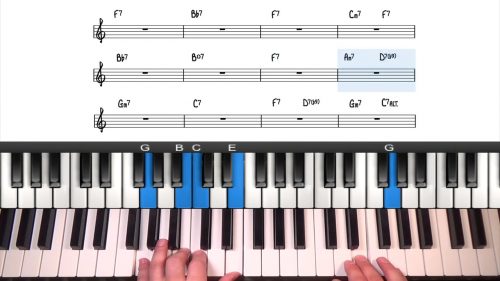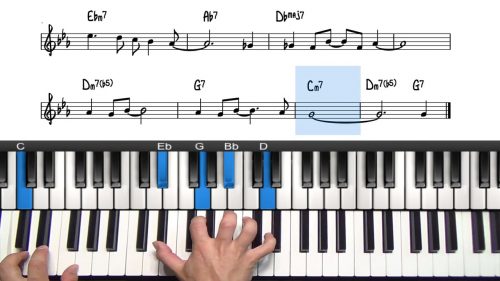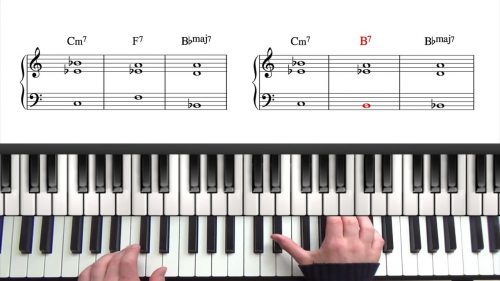Bass Lines & Left Hand Patterns
In boogie-woogie, the left-hand is the driving force of the music. It’s like a freight train, both in its train-like rhythm and in its power to drive the song forward.
The Bass Player & Drummer In One!
The boogie-woogie left-hand plays the role of the bass player and drummer in a band, both rolled into one. It keeps the beat, it plays the bass line, and it establishes the groove.
8th Note Triplets
The magic of the boogie-woogie bass line rhythm comes from what we could call a 12 against 4 rhythm. It’s based on 8th note triplets. An 8th note triplet is 3 8th notes within the space of one quarter note.
We will look at a simple blues left hand that can be played slowly. This is a very simple left-hand part, and a good one to start practicing with, to get the feel in your hands and in your body.
The Swing Feel
Swing is hard to define, but crucial to the sound and rhythm of boogie-woogie and all jazz and other improvised musical styles. Swing is very subtle, we will demonstrate the subtle differences between a swing rhythm, and a straight rhythm.
The Split Octave Bass line
The split octave bass line is probably the best-known boogie-woogie bass line. This can be difficult for smaller hands but we will explore the most effective way to practice this style so that you can play it fluently.
The ‘Train’ Bass line
This is the most complicated bass line, but is the favourite of many different musicians. We’ll be using it later in the course in the lesson on “The Boogie Woogie Prayer”.
Lesson Downloads
-
Boogie Woogie Basslines PDF File Type: pdf
Practice Tips
-
Practice these bass lines over the 12 bar blues form. That way you practice the line based on different root notes and you practice the whole 12 bar form at the same time.
-
Practice the bass lines slowly. It's harder to play slowly and accurately than it is to play fast.
-
One of the core pillars of this music is the steady left-hand rhythm. Practicing slowly will help you achieve this steady pulse.
-
If you are speeding up and slowing down whilst playing these bass line patterns, you will kill the groove and flow of the music.
-
Practice these bass line patterns slowly, with a metronome, and gradually bump up the tempo. You will be rewarded.








Is there any written documentation for this lesson please
Thanks
Charles
Hi Charles,
Yes there is a PDF file in the “Downloads” section of this page which outlines the 3 types of bass line pattern being used in this lesson.
Example 2 “Split Octave Bass Line” is also demonstrated by Jon Cleary in this lesson: pianogroove.com/blues-piano-lessons/practice-drill-for-walking-bass-lines/ – and there are lots of PDF files available on that lesson which demonstrates similar concepts.
Please let me know if I can help further and enjoy the lessons!
Talk soon,
Hayden